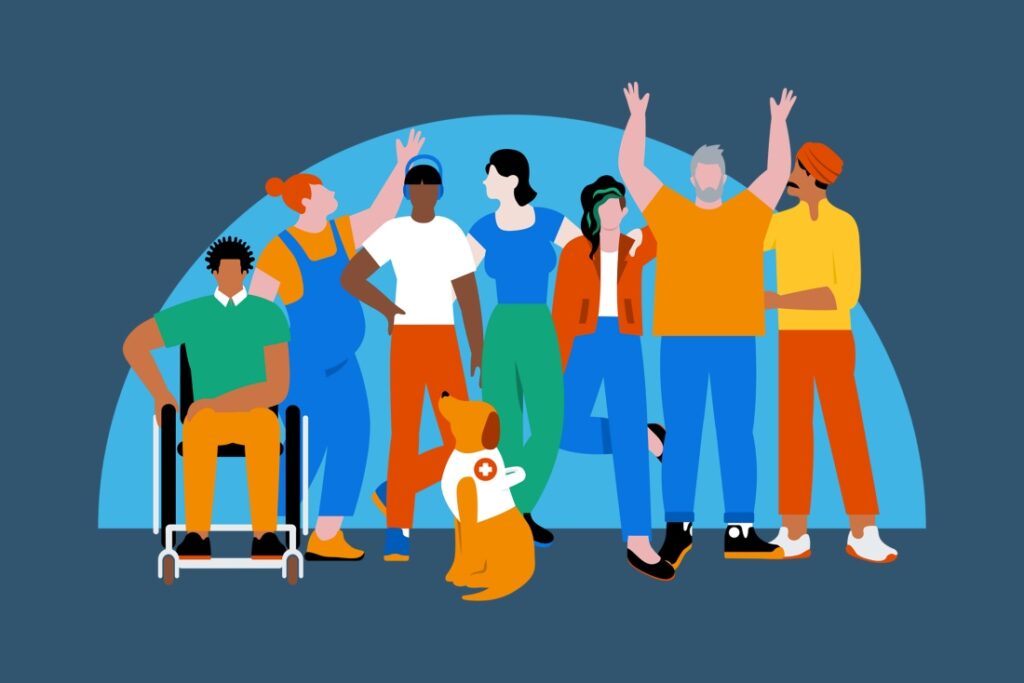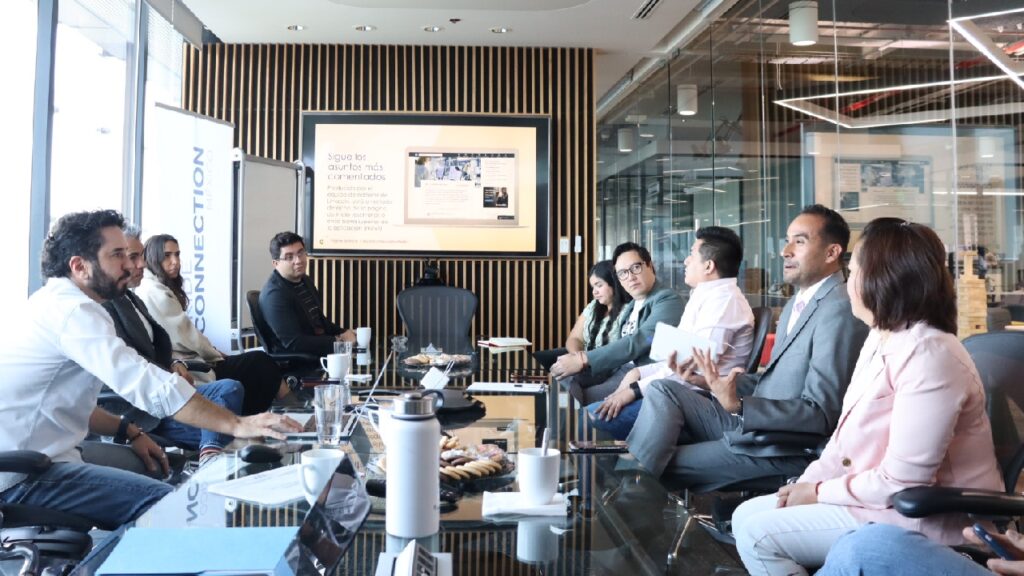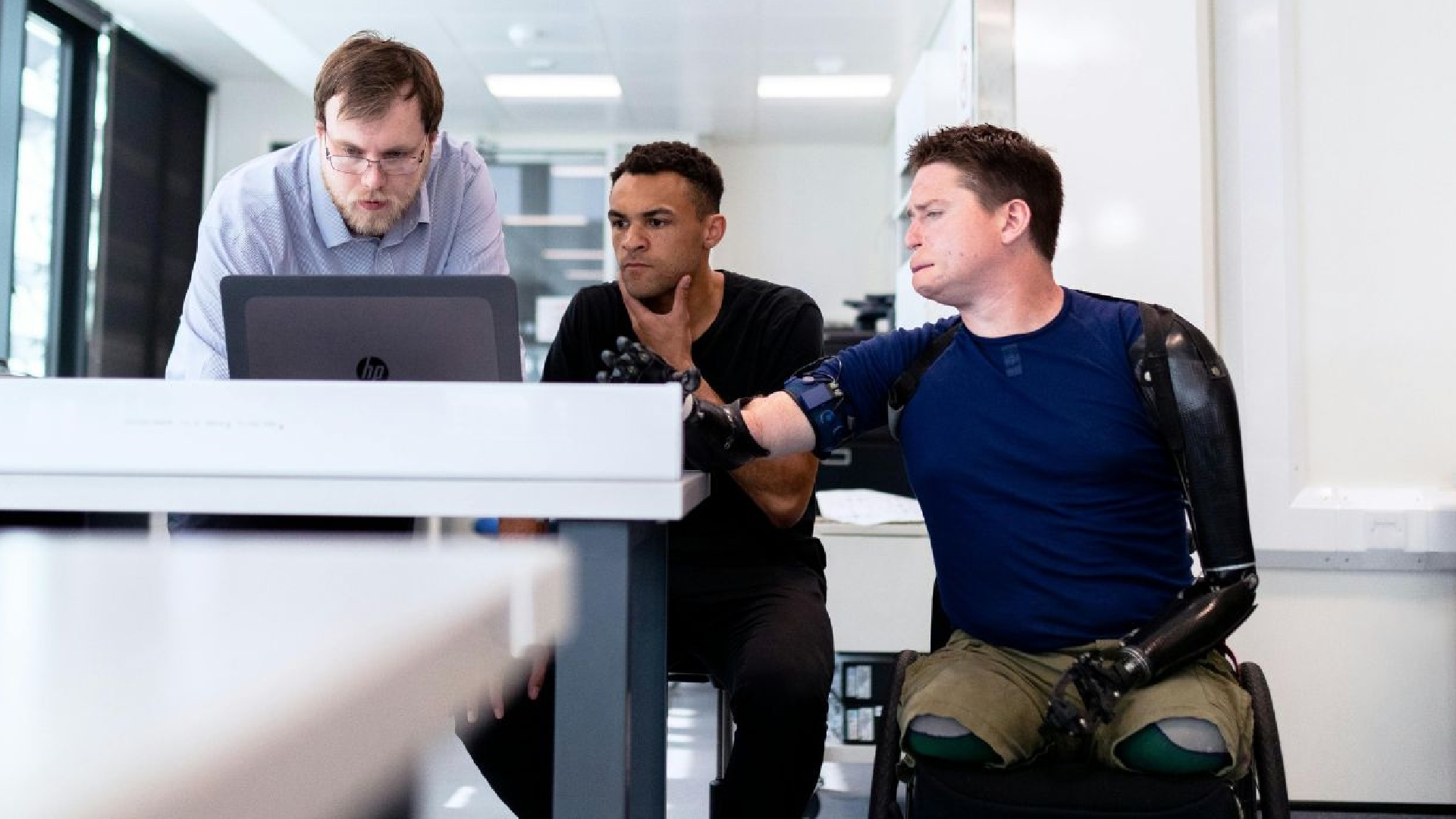If you've heard of ERGs (Employee Resource Groups or Employee Resource Groups), but you don't know what they are or how to implement them in your organization, here we tell you.
Talking about Employee Resource Groups o Employee Resource Groups (ERG for its acronyms in English) is a vital topic in the human resources management throughout organization. In particular, in those who dare to take the next step for transforming its work culture from a more human approach and focused on the total experience of its staff.
Today we see in many local and transnational organizations a latent need to promote the ownership value so that it permeates in a natural way. And not that it happens in a forced way, as in the obsolete models of Human Talent management. We face a dichotomy: "to do out of obligation or to do out of conviction"..
When there are activities or campaigns to manage the organizational culture that is are made by obligationThe result will be campaigns that may have been achieved in a timely manner. However, lack emotion, attraction, motivation. Employees will simply pass them by as just another activity or campaign in the pile that we manage to meet metrics.
On the other hand, when these activities, plans, campaigns to manage the organizational culture are made out of conviction of the staff, the result is different. We can see higher levels of adoption, commitment and management of organic change.
Similarly, there is higher motivation to make the change authentic from the grassroots level of the love, empathy and solidarity.

Why is it important to distinguish between obligation and conviction?
In my experience managing global high performance teamsI have learned that the best way to be able to permeate a culture of inclusion and diversity is by making people feel welcome. And that they can show themselves with authenticityregardless of culture and education. Likewise, the opinions of all people should be listened to and valued.
The empathy principle makes people feel that they are unite in one voice to achieve wonders and be invincible. This is how it is possible create a community to support each other, help others and manage actions in favor of inclusion for all people.
To this end, within the organizations there is a figure that is the driving force for the cultural change takes place naturally and with conviction. These are the Employee Resource Groups o Employee Resource Groups (ERG).
Here we will tell you what they are, the scope they have, their benefits and some of the best practices for adopting, managing and empowering them.
What are ERGs?
The ERG are groups or communities of workers who share a common common interest in inclusion of people and their intersectionalitiesits professional developmentthe improvement of the corporate culture and the business results.
Being driven by people with background, experience or similar characteristicsare voluntary and open to all employees.
ERGs often act as catalysts for a positive change in the culture of an organization. This is because normalize diversity and increase the visibility of minorities in the workplace.
A ERG is a self-directed group who believes in himself. It has human values non-negotiable as the respectthe active listeningthe membershipthe solidarity.
Therefore, it is a question of safe spaces where you can be you. In addition, you can helping others to become one, raising awareness and promoting values such as respect, fraternity and mutual support.

What are the benefits for companies with these groups?
According to the consulting firm McKinseyeffective ERGs can improving inclusion in the workplace. They do this by ensuring that their efforts are in line with both corporate and employee expectations.
Belonging to a ERG also helps employees to feel that they can be authentic at work. And so they get more meaning and purpose of the work they perform.
Some benefits and positive effects of ERGs for companiesAccording to McKinsey, they are as follows:
- reduce the turnover rate;
- encourage the achievement of organizational objectives;
- increase the level of productivityThe company's culture and leaders are inclusive;
- help to create a healthier working environment which seeks to understand and appreciate the diverse backgrounds of workers;
- attract and retain diverse talentwhich fosters the creativity and innovation;
- are sources of support and information for employees who seek to be allies and allies and permeate information inside and outside the company;
- generate economic returns by being the ones who manage the diverse culture;
- promote the employer branding;
- generate a high job satisfaction throughout the value chain.
Benefits for workers who are part of an ERG
On the other hand, belonging to an ERG also helps employees. Some of the benefits of an ERG for employees are:
- feel that they can being authentic in the workplace and get more meaning and purpose of the work they perform;
- develop their capabilities and skills in different areas such as: leadership, communication, project and business management;
- encourage the innovation, teamwork and resilience;
- assist in the employee mental health and their families.

How are ERGs formed?
Forming an ERG is no easy task. It requires a lot of courage and determination to initiate real change. Don't think that everything will be colorful at the beginning.
Creating an Employee Resource Group leads to time, effort and, above all, a lot of internal negotiation. In addition, it is required clear communication about what are its objectives and to the added value that it will give to the culture of the organization.
There are several ways to form ERGs and all of them are correct as long as the ERG exists. intentionthe passion and a openness of the leaders to explore terrain sometimes unknown to themselves.
It is also imperative that people are encouraged to make a change and managing a culture of respect and intersectionality. Thus, the way to train them will be managed progressively.
In my experience, ERGs are formed when there is a desire to manage a common vision and objective. For me, this objective is to generate visibility and representation.
Therefore, the Employee Resource Groups are formed from persons belonging to the same communityin addition to allies who are convinced to raise their voices and managing change for all.
Recommendations for training Employee Resource Groups o Employee Resource Groups
Be clear that, if you are going to do so, it will be a a project with many nuances, challenges and lessons learned. But yes, with a lot of visibility, reach e impactespecially in people when forming a community.
Here are some of them recommendations for forming an ERG:
- establishes a work plan;
- delimit your scope;
- define your mission and vision;
- be clear your SMART goalswhich must be specific (Specific), measurable (Measurable), reachable (Achievable), realists (Realistic) y of limited duration (Time-bound);
- defines the structure, roles y responsibilities within the group;
- establishes a calendar of activities and a possible budget;
- keep in mind that you're going to need a lot of help and that is why it is convenient to have at hand a Executive Sponsor (executive sponsor), who is a key figure in the ERG sustainability and the support of the leadership teams;
- have a succession planThe ERGs have a cycle and so do people;
- considers that the scope is voluntary;
- be aware that there will be challengesespecially for presence and communication;
- make sure that the employee value and your DEI strategy (diversity and inclusion) be part of your objectives in the proposal and development to give more weight and commitment;
- have fun and, to the extent possible, turn them into trusted groups and promotes innovation;
- identifies and invites all those who want to be part of an ERGas members with a role and responsibility or as agents of change.
How can we manage and promote an ERG within the company?
To enhance the results of ERGs within organizationsSome of the aspects to be taken into account are the following.
- Believing in the power of these groups as catalysts for sustainable change. To do this, it is important to give a vote of confidence and empowering people who want to form it.
- To provide employee confidence on the role they play in the management of safe work environments and that there will be a real commitment from leaders to support them and to the change generated.
- Generate a paradigm shift in people by defending the human rights of all through a true internal and external commitment.
- Remember that it's okay not to know how things are done. As companies we must be vulnerable and sensitive to unlearn and relearn.
- Have a Executive Sponsor helps a lot to breaking down barriersto generate movement and proactive and sustainable action.
- Allocate budgets that are translated into action plans tangible (conferences, workshops, participation in forums, etc.), summits). This will empower ERG members to empower themselves and others.
- Align your employee value strategy and values to the scope of the ERG.
- Continuing to make visible for greater openness.
Enter more ERGs exist within a companythe better the possibility of living a transformation process with a view to a culture of respect, inclusion and care for all people and their intersectionalities.
Undoubtedly, it is important to promote the creation of these groups that will help you tell a story where the Inclusion and diversity will be managed with conviction.. This will help everyone to feel a sense of belonging, authenticity and empowerment to give their best.
And you, do you think it is important for companies to have these affinity groups? I'll read you in the comments.
With information from McKinsey
Text prepared by Héctor Solís



